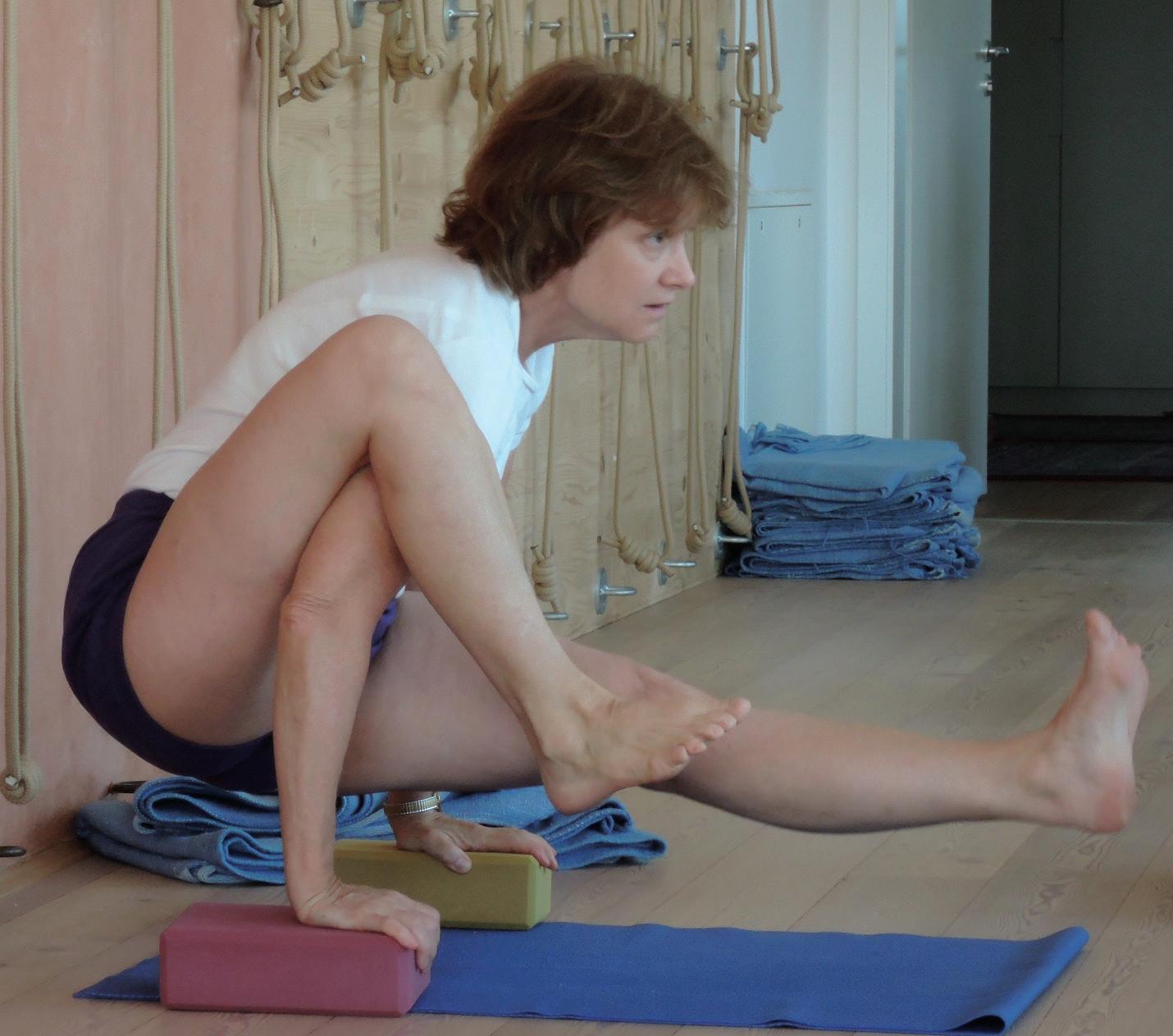
2 minute read
Art, Science, and Philosophy in our Practice – Laurie Blakeney
from Yoga Samachar SS2015
by IYNAUS
ART, SCIENCE, AND PHILOSOPHY IN OUR PRACTICE
BY LAURIE BLAKENEY
Advertisement
What I love about the study, practice, and teaching of Iyengar Yoga is that it helps us to live an artistic, philosophical, and investigative life. Guruji, Prashant Sir, and Geetaji have often spoken and written about the art, science, and philosophy of yoga.
Gita, and the Upanishads among other texts. These works add color and texture to the asana and pranayama we practice. We have been advised by our teachers at RIMYI to study seriously, and often, the philosophical texts. As a result, our practice is not allowed to be merely physical or “health-oriented.”
Laurie Blakeny takes Eka Hasta Bhujasana.
These three intersecting aspects, or perspectives, intrigue me, and I try to share that curiosity with my students. The artists of society are the ones among us who observe and comment on human life and nature—and God. They sing, sculpt, write, dance, and paint our point of view into greater appreciation for the nuance, variety, and glory of life. When we practice, we are involved with this artistry and can devote it to a sacred awareness.
questions and challenge the human mind to explore truth, aspects of knowledge, and moral living. I love to study and share the philosophy of the Patanjali Yoga Sutra, the Bhagavad The scientists in society are the ones who have the creative and expansive intellects to consider new ideas, explore unknowns, and discover knowledge that has not before been examined. I am amazed by, and try to share, the science of yoga practice, as it has been developed by our Guruji, B.K.S. Iyengar. His penetrating understanding of human minds and bodies and his innovative approach with props and sequences makes us appreciate the “laboratory” approach as we investigate the subject. To live like scientists means we have to summon the courage and curiosity to surge into the unknown. Our practice gives us the tools to do this.
To live philosophically, scientifically, and artistically, we must be acute listeners and appreciative watchers. We need to embrace the art and science of learning itself. We must learn to be expressive—expressive and clear with our words, our movements, our actions, and our thoughts. And as artistic as the practice of yoga is, it is only on rare occasions a “performance art.” So there is no pressure to perform, and the ego need not worry itself with that possible strain. Yoga is for our own evolution, a philosophy that took B.K.S. Iyengar well into his nineties. The philosophers in society are the ones who ask hard
Laurie Blakeney (Advanced Junior I) is the director of the Ann Arbor School of Yoga. She has been studying Iyengar Yoga since 1971 and has studied at RIMYI every year since 1983.









